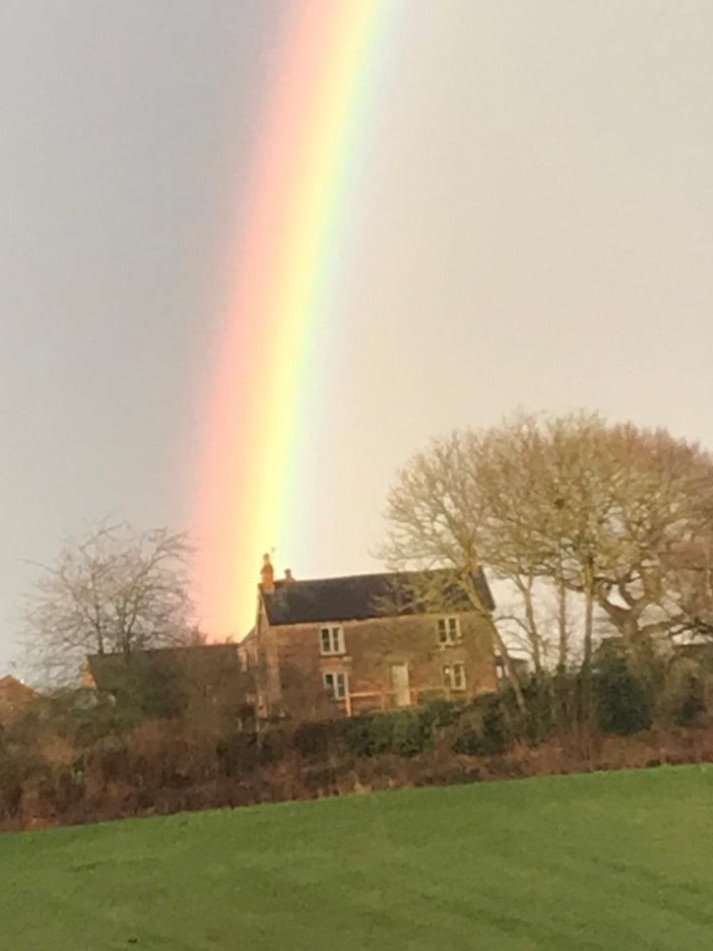
Park Farm
Park Farm, Vicarage Lane
“The Park” in Little Eaton was enclosed by the Dean of Lincoln as early as the 14th century but was later let out and mapped with common land in1789. By then, a building and two semidetached houses had been built as a dairy (or “dayhouse”) for farmers grazing cows nearby. These buildings and the field around it were awarded to Lord Scarsdale who then leased them to Michael Tempest. In 1845, the Church Commissioners in London took over 100 acres in the north of the village, including the house and buildings. At this time the house was described as
“House, buildings, yard and near park. Small farmhouse, stone and thatch. Three rooms below and three above in moderate repair. Barn, three bays, stone and thatch and small cowshed.”
Park Farm from Vicarage Lane, 2020
There are references to The Litchfield family and a Hawkins family living at Park Farm but the first firm record is to Juda and Thomas Brown. Juda was a Tempest. When Juda was 17 she had an illegitimate child, Thomas Tempest. She later married Thomas Brown and had a further 12 children. By then, Thomas Brown had taken over all the park, together with some other land, to form the biggest farm in the parish. When Juda died, the farm was taken over by her daughter and son-in-law John Brickwood who continued to run it. The Brickwoods had two sons and four daughters while living in the house.
The farm was then taken over by Hiram and Mary Robinson. Hiram died in the 1870s and Mary sold up in 1880. The farm was then leased to the Hastie family. John Hastie, his wife Isabella and seven of their nine children came to Park Farm. John Hastie became an important figure in the village, acting Vice Chairman of the village School Board. By 1901 the Hastie family had moved out with John living with his wife, two sons and a daughter in Alfreton Road.
The farm was taken over by William Yates in 1901 and his unmarried sister Mary. William later married Annie and they had a daughter, Margaret. They lived at Park farm until 1921 when the house and land was sold by the Church.
George Thums lived at Church Farm and ran a butcher’s shop. In 1921 he bought Park Farm and installed his son Henry, with his family. Henry was married to Harriet and the couple had four children, Ada, Leonard, Arthur and Mary. Meanwhile, Henry’s brother, Arthur, took over Church Farm. The two families lived in the two farms (known locally as Top Farm and Bottom Farm) until 1937 when Arthur died. Henry and Harriet then moved to Church Farm.
In the late 1930s the farm was bought by Garford Lilley, a wealthy businessman from Derby. At the same time he bought The Outwoods nearby. Garford Lilley ran The Outwoods and Park Farm as one enterprise with managers rather than tenants occupying the house at Park Farm. Two unmarried brothers, Frederick and Albert Kinder, lived at the farm during the war years but moved on shortly afterwards and were followed by George Essex and his family.
In 1952, Garford Lilley sold Park Farm house, buildings and about 40 acres of land to Albert Redfern and his wife. His son, Peter, and his wife, Elizabeth took over and he and his wife lived there until they died. The house and barns were sold separately in 2010 and are now private homes.
Threshing at Park Farm



